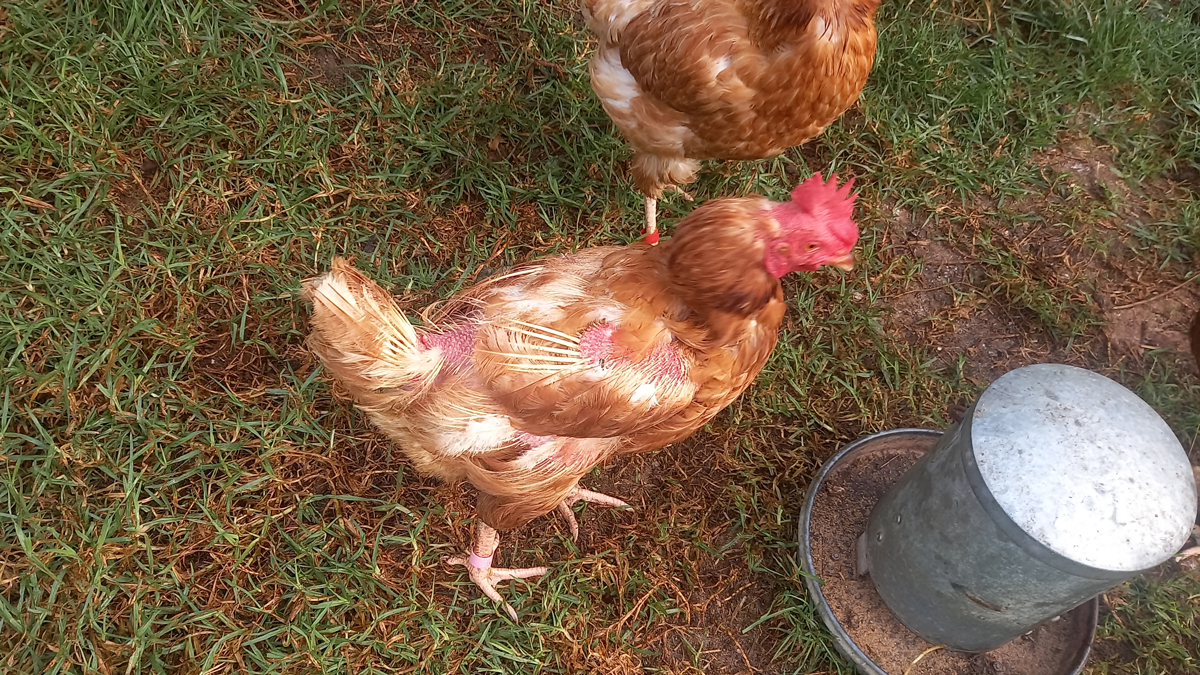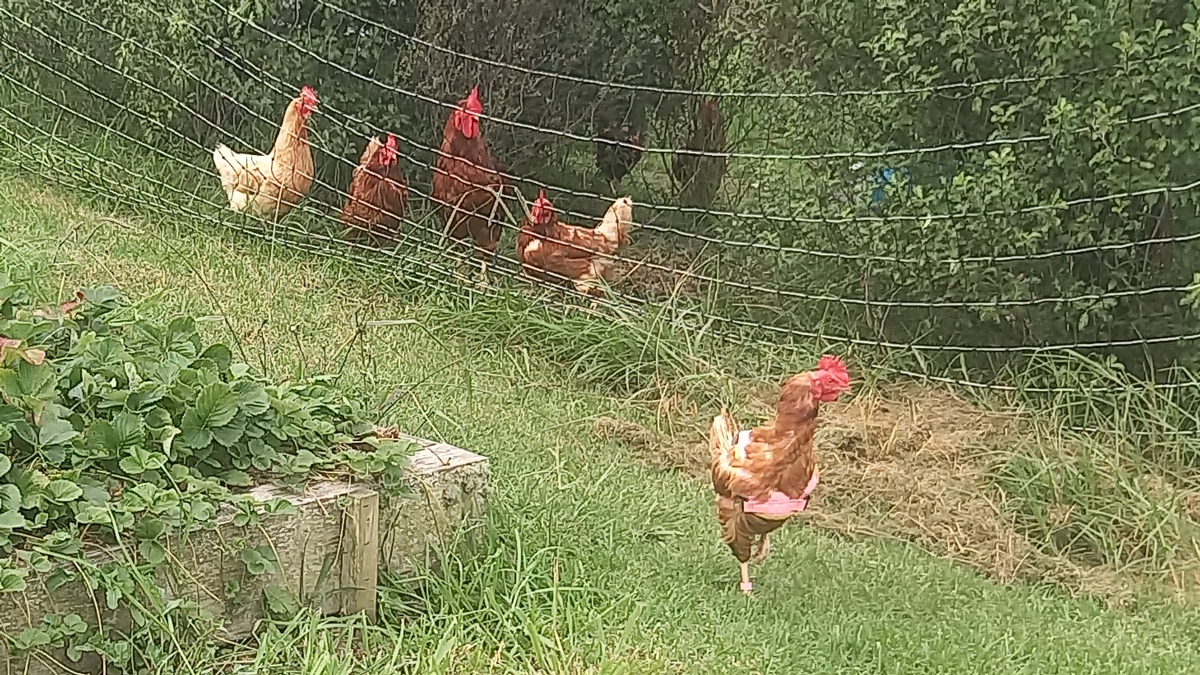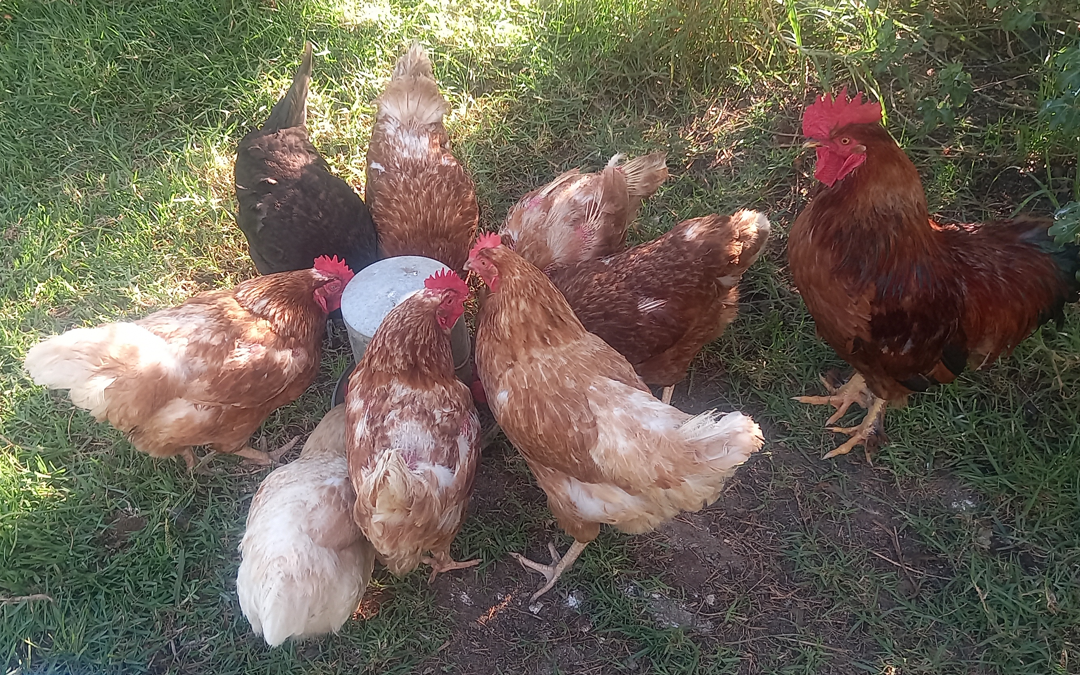Not long before Christmas, Richard and I were forced into choosing one rooster. Or rather, the roosters made that decision for us, and we made it official.
It’s resulted in a social re-organisation in our chicken coop, and it’s had some unexpected benefits.
With our original rooster, Alaska, gone; his son – Tommy – has taken over protecting the flock of 8 girls.
Rewind
It would probably help to start by explaining the dynamics of the flock as it was in early December.
While Alaska was still alive, the flock was almost two flocks.
On one side, Alaska had his Hyline girls – we lost a few to natural causes over winter, but somewhere between 6 and 9 girls, plus Alaska. He absolutely favoured the brown, commercially-produced Hyline girls.
On the other side, Tommy kept close to his ‘sister’ Pam, and a little black chicken who arrived with our ‘random chooks’. She doesn’t have a name, but she has always been on the ‘outside’ of the other girls – probably because she looked different.
I know it sounds like Mean Girls, but this is where the term ‘pecking order’ comes from – chickens. They are the original Mean Girls. And also a bit racist. The chooks that looked different tend to be the ones on the outside.
Anyway, the two flocks co-existed mostly peacefully until they didn’t. Following a violent and bloody cockfight, Tommy took his place as the strutting leader. Alaska exiled himself to another planting.
So we took care of the problem, and then things really started to change.
Ruffled feathers
Almost immediately, the pecking order got a shake up. Pam and the little black chicken were both elevated in the rankings as their guy took over. I wouldn’t say they’re at the top, but there’s less bullying now.
The other Hylines fell into some sort of order. You can tell who’s at the bottom of it. The poor girl is quite literally hen-pecked. I took this photo before I gave her a special vest to help protect her mostly bare and red body (I got it on AliExpress if you’re wondering).

I also frequently find her foraging in our veggie garden.
My observation is hens at the bottom of the pecking order are most likely to leave the flock and go hang out elsewhere. Makes sense, that’s what I did when I was bullied in high school too.

Knowing she’s a bit of an outcast, I don’t mind much if she’s cleaning up the bugs and getting into the tomatoes and strawberries. Maybe I just empathise.
Pre-shakeup, it was Pam that left to forage in less socially-stressful places. Now it’s the Hyline at the bottom of the pecking order.
Pam
The biggest surprise of the whole encounter has been Pam. In 3 months since the head rooster changed, she’s about doubled in size.
And with her growth spurt, her eggs also increased in size. The last time I talked about Pam, I told you how much I loved her tiny eggs – at the time I thought it was an effect of crossing a Hyline with whatever Alaska had been.
But that wasn’t right at all. She’s got all the genes Hylines are bred for – she’s docile, she lays eggs on a regular basis, and when she’s not right at the bottom of the pecking order, those eggs are a perfectly normal size!
Egg colour is correlated to chicken colour – and the same chicken lays the same coloured eggs for their entire life. Pam’s a bit lighter than the other Hylines, and so are her eggs.
So we know we’re still getting ‘Pam eggs’, they’re just bigger now!
Fairer distribution
I think it comes down to the idea that the further up a pecking order a chicken is, the more food they get in the frenzy.
Turns out, even though we made an effort to feed Tommy and “his flock” separately, they’ve done better since we changed things up.
The little black chicken’s eggs were always slightly under-sized in the past too. And now? They’re not.
All our eggs are coming out at a consistent size, regardless of the chicken.
So as much as it sucked to remove Alaska from the flock, it’s been the right call. Generally, there is more harmony. Fewer chickens escape, less regularly. And our egg collection has improved.
I didn’t see any of this coming – observing flock dynamics was never hugely important before we got roosters (although it definitely existed). And I had no idea the effect it would have on our plates!
But it’s been interesting to notice what changes occurred, and it’s pretty clear to me that if you’re going to have roosters, choosing the right rooster is a critical part of the process.



How, exactly, do you euthanise a chicken? In case I ever need to.
Here’s the This NZ Life article I’ve always found helpful on the topic.